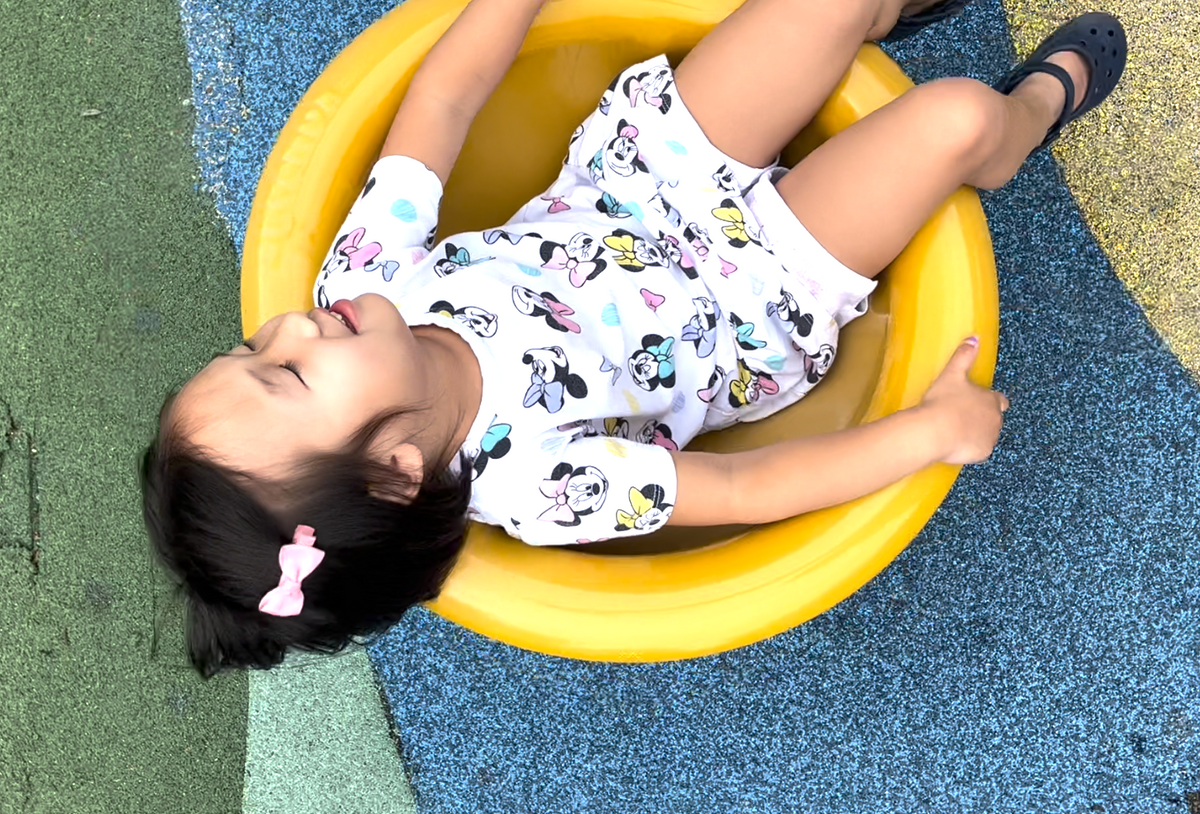Understanding Under-Responsive Sensory Needs in Children
Learn to recognize the signs of under responsive sensory needs in children and how we can support rather than punish them in their journey for growth and development.

As Autism Awareness Month kicks off I'm thankful for the chance to revisit how we understand and support individuals with sensory sensitivities. I'm struck by the remarkable spectrum of sensory experiences children encounter. It's a reminder of the importance of our role as caregivers to enable our neurodiverse children to flourish in their unique journeys.
In our previous articles, we delved into addressing challenges faced by our highly sensitive children, which often lead to sensory avoidance. Today, we shift our focus to the other end of the spectrum, where under-responsive sensory processing can lead to sensory-seeking behavior. Some children may exhibit a combination of both oversensitivity and undersensitivity. Understanding your child's unique sensory profile is so important to providing appropriate support.
The Sensory Seeker
Children who are sensory seekers have an insatiable appetite for sensory stimulation. For these little explorers, sensory input can act as a boost for them, helping to increase alertness or provide a sense of calm and organization within their bodies. When the don't get enough sensory stimulation, they might find it difficult to focus or self-regulate. If any of these signs below sound familiar, you may have a sensory seeker on your hands:
- Touch: They're constantly reaching out to feel every surface, are comforted by deep pressure hugs and massages, and sometimes, they just can't help but squeeze things a little too hard. They may have a superhero-like tolerance for pain, which can be both impressive and a little concerning. Every now and then, in their quest to connect with the world around them, they might accidentally cause harm to themselves or others, but it's always unintentional. And personal space? Well, let's just say they've never heard of it.
- Sound: These kiddos are all about making noise and creating a symphony wherever they go. You might find them stomping their feet, clapping their hands, and even clicking their tongues in rhythm to their own tune. And when it comes to music or parties, the louder, the better! They thrive in the midst of bustling, noisy gatherings and have a special knack for turning up the volume on life.
- Taste: Sensory seekers may have a surprisingly high tolerance for spicy foods and an affinity for the most unusual tastes and textures. But, here's the kicker: they're not just curious about flavors; before they master self-regulation, they might just lick or chew on anything they can get their hands on, from shirt sleeves and art supplies to even a less-than-sanitary subway handrail, much to the horror of hygiene-conscious straphangers.
- Movement: When it comes to movement, sensory seekers are the spirited whirlwinds of childhood play. They thrive on all things active – jumping, hopping, spinning, and running are their jam. Even if you somehow succeed in making them sit down, trust me, the fidgeting and squirming will never stop. They're perpetually in motion, whether they're engaged in boisterous play or testing their physical limits, which would cause any parent to sprout additional gray hairs.
This article contains affiliate links to products I feel good about endorsing, meaning I may earn commission from qualifying purchases. Check disclaimers for more info.
Supporting Your Sensory Seeker
If your child is a sensory seeker, here are some strategies to provide them with the sensory input they crave while ensuring their well-being:
- Incorporate alerting activities (10 Alerting Activities for Classroom or at Home) and heavy work activities (25 heavy work activities for small spaces) into their daily routine to reduce the need for self-seeking movement.
- Follow an alerting activity with a heavy work task to help them regain focus and calm before returning to structured activities.
- Limit screen time before bedtime to ensure a good night's rest. Here are some of our favorite screen-free ways to keep our children engaged and entertained when it's time to take a TV or video game break.
- Use a weighted blanket or a weighted vest during relaxation time.

Understanding the Under-Responsive Child
If your little one falls into the category of under-responsive kids, you've probably noticed that they tend to be a bit lethargic, tire easily, and can be slow to get into the groove. They might seem disinterested or even labeled as 'lazy,' but they may just require much more sensory input to get going. Here are some tricks that can help awaken their senses and boost their alertness:
- Prep with Alerting Activities: Before tasks that require focus and concentration, give them a dose of alertness. Think jumping jacks, a quick jog in place, or fire up the core with a balance board. It's like drinking your morning coffee to get those gears turning.
- Heavy Work Activities: Engage them in some heavy work activities, like wall presses or hand presses, before they tackle tasks that need coordination. This wakes up their muscles, making them more ready to engage.
- Stay Hydrated: Encourage sips from a water bottle throughout the day. Proper hydration can make a world of difference in maintaining alertness.
- Fidget Fun: Introduce them to fidget toys, like a colorful rainbow sensory toy or stretch and squeeze balls. These can be magical in keeping their hands and minds active.
- Active Seating: Consider incorporating a wobble cushion on their chair or even a yoga ball chair. These allow for subtle movement while they're seated, keeping their senses engaged.
- Visual Aids: Bright color coding and visual cues can be a game-changer for organization and attention to detail. It's like giving them a roadmap to success!

Creating a Sensory Diet
One powerful tool to support children with sensory challenges is the sensory diet. A sensory diet is an individualized plan of physical activities and accommodations designed to help a child meet their sensory needs and maintain focus and organization throughout the day. Sensory diets can help prevent sensory and emotional overload, as well as help under-responsive children become more alert and engaged. It is recommended to work with an occupational therapist to tailor a plan specific to your child's needs and used at home and school.
Observational checklists like this Sensory Checklist based on Raising a Sensory Smart Child can be a helpful starting point for identifying your child's sensory profile. There are many resources available both online and in print to guide you along this journey with your child.
🖐 Touch & Tactile sensitivity
👂 Sound Sensitivity
👃 Smell & Taste sensitivity
👁 Visual sensitivity
Embracing your child's unique sensory sensitivities and crafting personalized support can truly transform their journey of growth and development. Sensory needs should be celebrated as an integral part of every child's development, not merely as something to be corrected. Don't forget to share your thoughts and experiences with us. Your insights and stories can be a beacon of hope and inspiration for others, and together, we can empower our children to not just survive but thrive in this world.




Comments ()